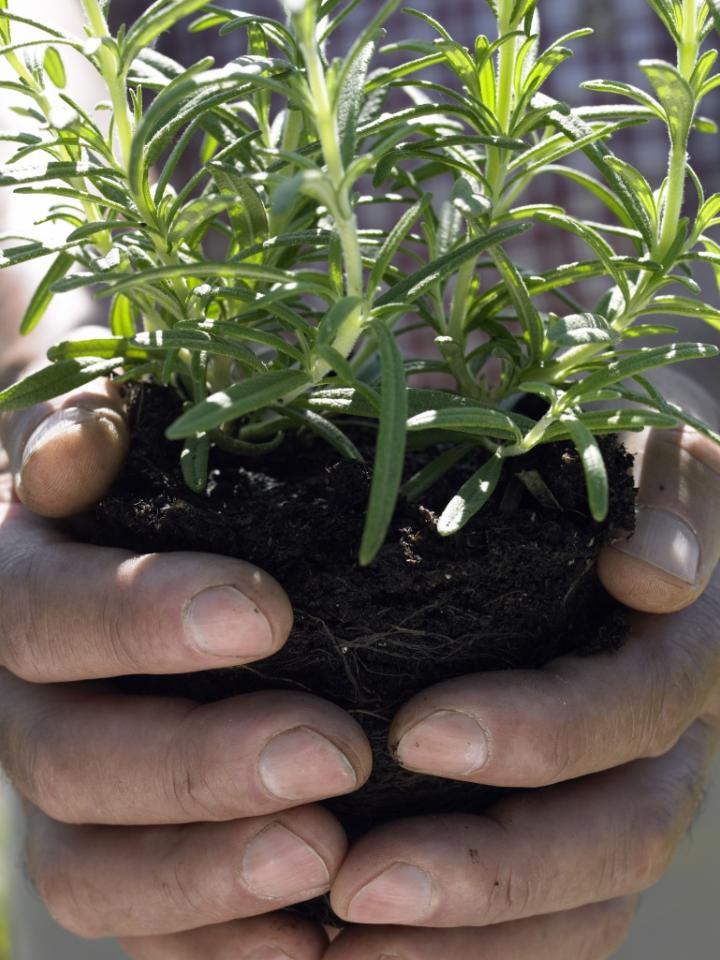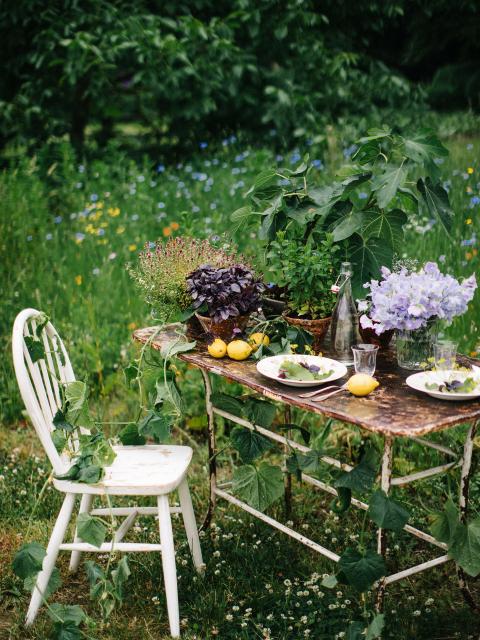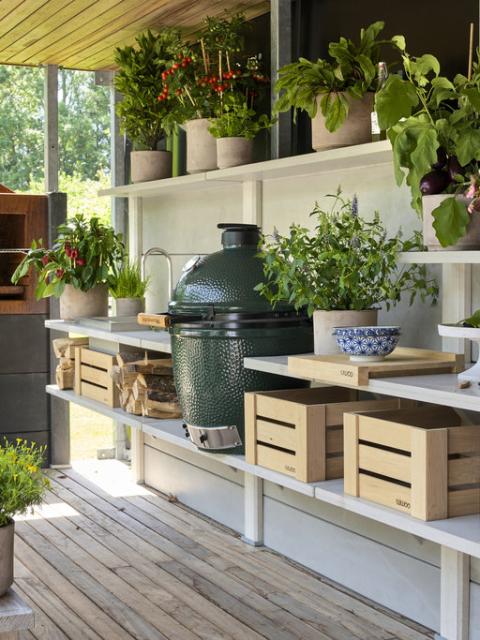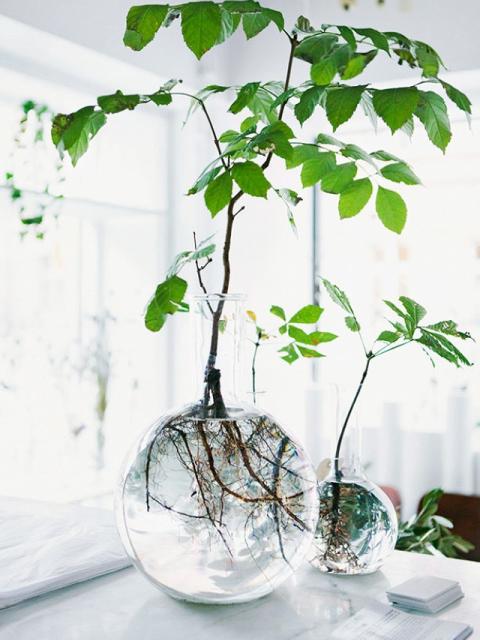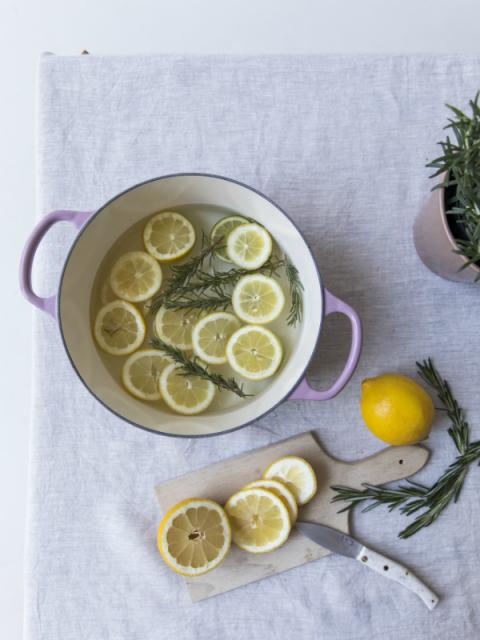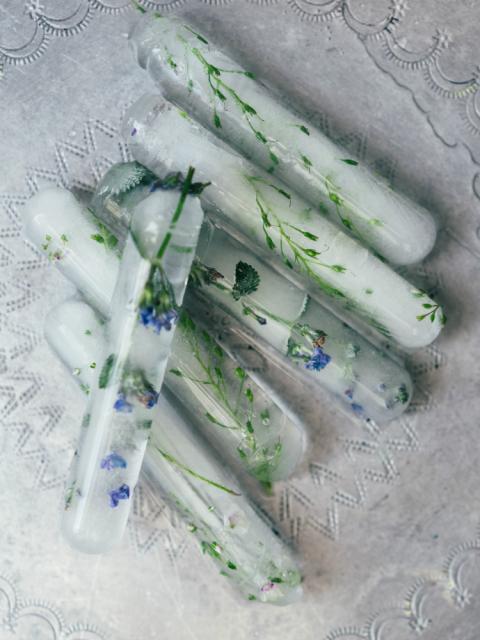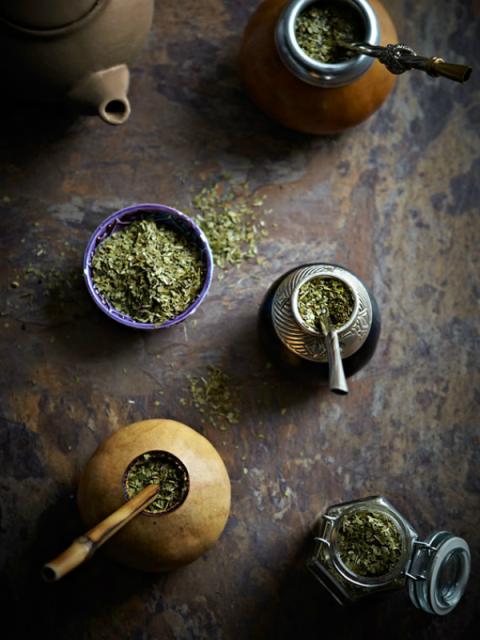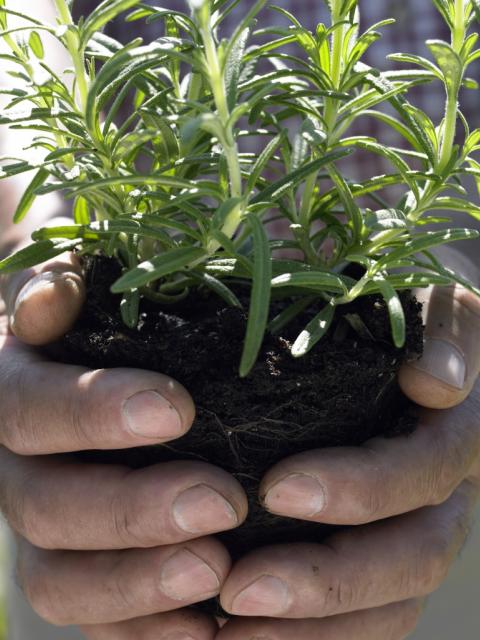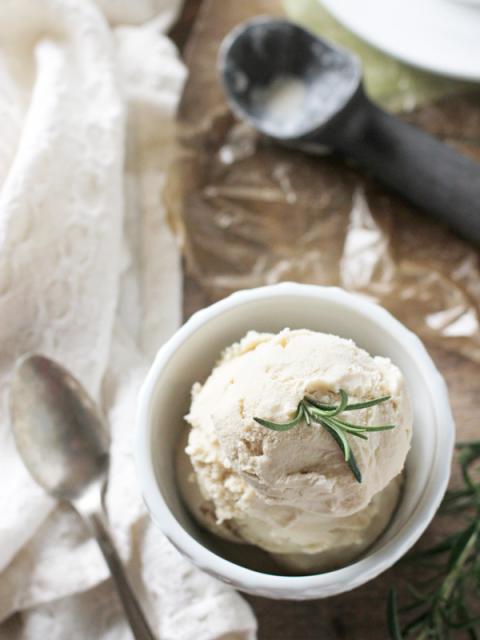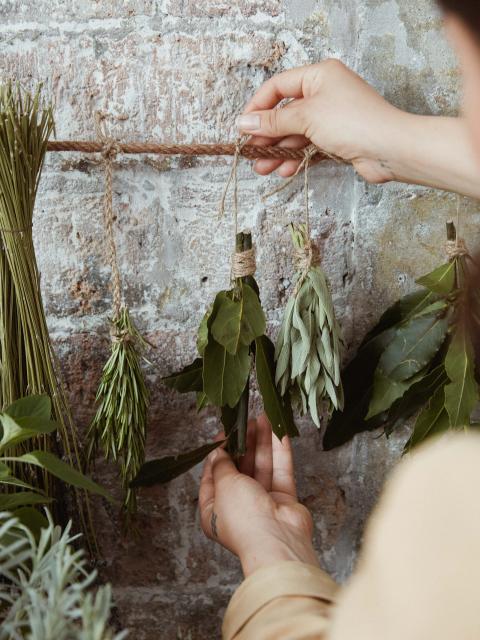WHAT DOES ROSEMARY LOOK LIKE?
Rosemary (officially called Rosmarinus officinalis) is a moderately hardy evergreen shrub with attractive green leaves that resemble needles. When dried they’re used as herbs. The plant produces edible blue flowers from March to May, although there are also species with pink flowers. The most common rosemary plant reaches a maximum height of 1 m, whilst there is also a creeping variety that grows to about 30 cm high and is ideal for borders, hanging baskets and walls. Placing herbs like rosemary amongst decorative plants is not just a trend, but also enhances the biodiversity of your garden. Position the plant alongside a path so to that every time you pass it and touch the leaves an attractive incense-like fragrance is released. Its nectar means it's attractive to butterflies, bees and other pollinators.
rosemary species and properties
Rosemary is part of the Lamiaceae or lipflower family. This family also includes other aromatic plants such as thyme, lavender, sage and mint. Rosemary is evergreen, fairly hardy and is especially valued for its aromatic fragrance and culinary uses.
The most common rosemary variety, rosemary officinalis, grows to a height of about 80 centimetres and can reach a maximum height of 1.5 metres. There is also a creeping species, creeping rosemary, which grows about 30 centimetres high and is ideal for borders, hanging baskets and on walls. Rosmarinus officinalis 'Blue Winter' has leaves of a blue-grey hue and a slightly less pronounced flavour. This species grows about 75 to 100 centimetres high.
when should you plant rosemary?
Rosemary is best planted in spring, when the periods of frost are over and the soil is getting warmer - from around April to the end of June. Planting rosemary in spring gives the plant time to take root before summer arrives. Rosemary likes poor, calcareous soil.
how to plant and care for rosemary
- Rosemary thrives best in a reasonably sheltered spot in full sun. Semi-shade is also possible, but the more sun, the better the rosemary will do.
- Provide well-drained soil. Rosemary needs good air circulation.
- Rosemary is hardy, but sensitive to frost. If you want to protect rosemary against frost, place dry leaves at the foot of the plant and cover with a fleece if necessary. If your rosemary is potted, you can put it under a roof or in a greenhouse to hibernate.
- Rosemary planted in the garden needs little water. Water only in extreme drought and after planting.
- Is rosemary planted in a pot? Then choose a pot with good drainage. Do not let potted rosemary stand dry for more than a week, and water regularly if necessary.
- If necessary, you can apply organic fertiliser (with lime) to rosemary in spring to promote growth.
how to prune rosemary
To keep your rosemary as healthy and beautiful as possible, it's advisable to prune it. Preferably do this in summer (after flowering) and in early spring, before new growth starts (around March). By pruning rosemary, you stimulate growth and prevent the plant from becoming woody. Note: if you regularly (throughout the year) cut off sprigs of rosemary for cooking, you are already pruning it and additional trimming may not be necessary. Pruning rosemary is simple:
- Remove all dead and damaged branches with sharp secateurs.
- Prune all rosemary branches back a little (about a third of the way down). Note: never prune down to the bare wood and make sure that some green remains.
- Prune back any side shoots to keep the rosemary compact and in a nice shape.
when and how to take rosemary cuttings
Want to propagate your rosemary plant? It's simple! Check out our step-by-step plan below for propagating rosemary cuttings. Take rosemary cuttings preferably in spring, when the plant is full of vigour, has many shoots and roots most easily.
- Select the plant you want to take a cutting from. Choose a healthy, non-flowering shoot from the mother plant.
- Trim side branches of the rosemary from the plant in such a way that a piece of the main branch still has some shoots. If the shape of your plant doesn't allow for this, simply cut off the underside of the stems with a knife, just below a leaf node. This is the point from which leaves grow.
- Remove most of the leaves at the bottom of the stems. If necessary, dip the cutting in cutting powder (this promotes root formation).
- Fill pots (or seed trays/cultivation boxes) with cutting soil (a mix of perlite and potting soil is ideal). Stick the cuttings into the soil, along the edges in the pots without crowding them (e.g. 4 cuttings per pot).
- Cover the cuttings with a plastic bag (or add lid to the propagator) so that the cuttings retain more moisture.
- Water the cuttings and put the pots in a sheltered, warm place with shade (avoid direct sunlight).
- Water the cuttings regularly. Keep the soil moist, but not too wet (to avoid root rot).
- After a few weeks (around 6 weeks), check the bottom of the pots/containers. See if roots are appearing. Once your cuttings are rooted, give each plant its own pot with peat-free potting soil.
- Keep watering and repotting the plants as they grow. In spring (after the cold period is over) you can transplant them to your garden or balcony.
THE ORIGINs OF ROSEMARY
The Latin name of rosemary is Rosmarinus, which literally translated 'dew of the sea'. Rosemary got this name as the plant grows wild mainly on the coast. Originally, rosemary comes from the Mediterranean coastal regions, probably from Greece and neighbouring countries. The plant was first used by the Egyptians, Greeks and Romans. Remnants of rosemary were even found in Egyptian pyramids! The Ancient Greeks associated the strong smell of rosemary with love, and used rosemary at weddings. The plant was also valued for its supposed healing properties.
During the Middle Ages, rosemary spread across Europe. It became a popular plant in monastery gardens and pharmacies. The plant became increasingly popular all over the world, both for culinary and medicinal uses. Today, rosemary has many uses, from decorative purposes to aromatherapy, and from medicinal to culinary applications.
WHAT IS ROSEMARY USED FOR?
Rosemary is a versatile plant known for its many uses. Here are the most popular ways to use rosemary:
- Culinary: as an herb, rosemary is often used as a seasoning in dishes and as an herb for tea. Both fresh and dried rosemary leaves are suitable for this purpose. The herb is most commonly used in meat dishes (such as chicken, beef, lamb and pork), with fish, potatoes, bread and sauces. Rosemary provides an aromatic, spicy flavour that combines well with other spices and herbs.
- Medicinal: rosemary has a rich history in traditional medicine, due to its alleged medicinal properties. Among other things, it is used for digestive problems, headaches, fatigue and for better blood circulation.
- Aromatherapy: the fragrant essential oil derived from the branches and flowering tops of rosemary is used in aromatherapy. For example, the oil can be added to baths, oils and air fresheners for its invigorating effects.
- Cosmetic: rosemary oil, for its nurturing and anti-microbial properties, is added to creams, shampoos, conditioners and soaps. Rosemary oil is also used to promote hair and scalp health.
- Decorative: because of its fragrance and attractive, evergreen leaves, rosemary is also used to freshen up gardens, balconies and flower arrangements.
THE SYMBOLIC SIGNIFICANCE OF ROSEMARY
Rosemary is valued mainly for its useful properties and fragrance. The plant has a rich symbolism, which varies by culture and depends on the context. In the UK, the plant is known as a symbol of memory. In Shakespeare's Hamlet, Ophelia says: 'There's rosemary, that's for remembrance.'
- Fidelity and memory-keeper: for centuries, rosemary has often been used in ceremonies and rituals as a symbol of fidelity. The plant used to be included in bridal bouquets and wreaths. The plant was also given to lovers going on a journey.
- Healing and purification: rosemary is known for its medicinal properties and is used in traditional medicine for its purported healing and purifying properties. The plant is therefore associated with healing and health.
- Love and friendship: rosemary is associated with love and friendship. It is traditionally used as a gift to loved ones as a sign of appreciation and affection.

